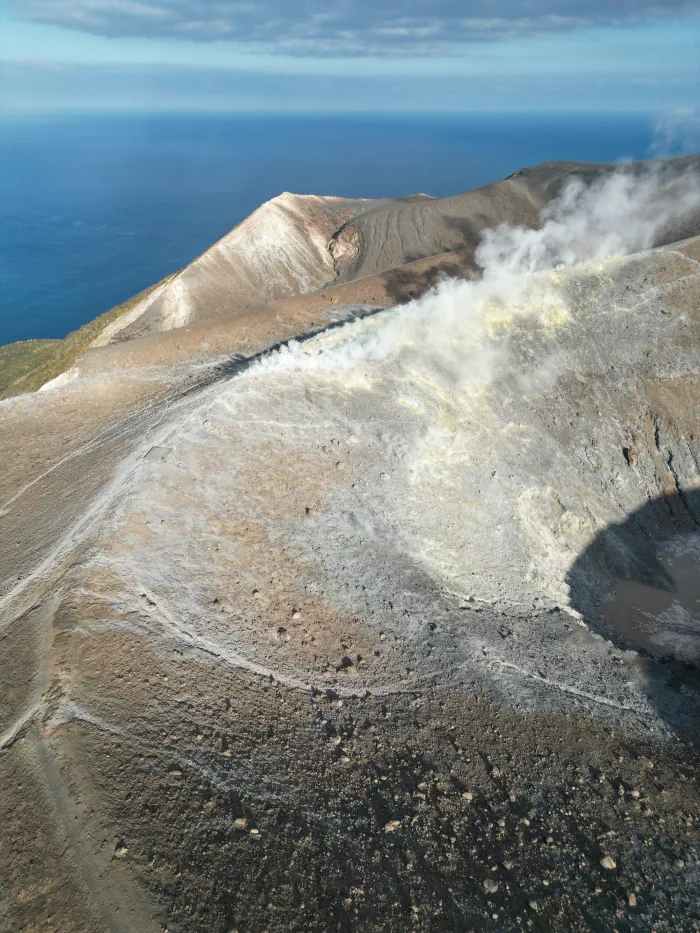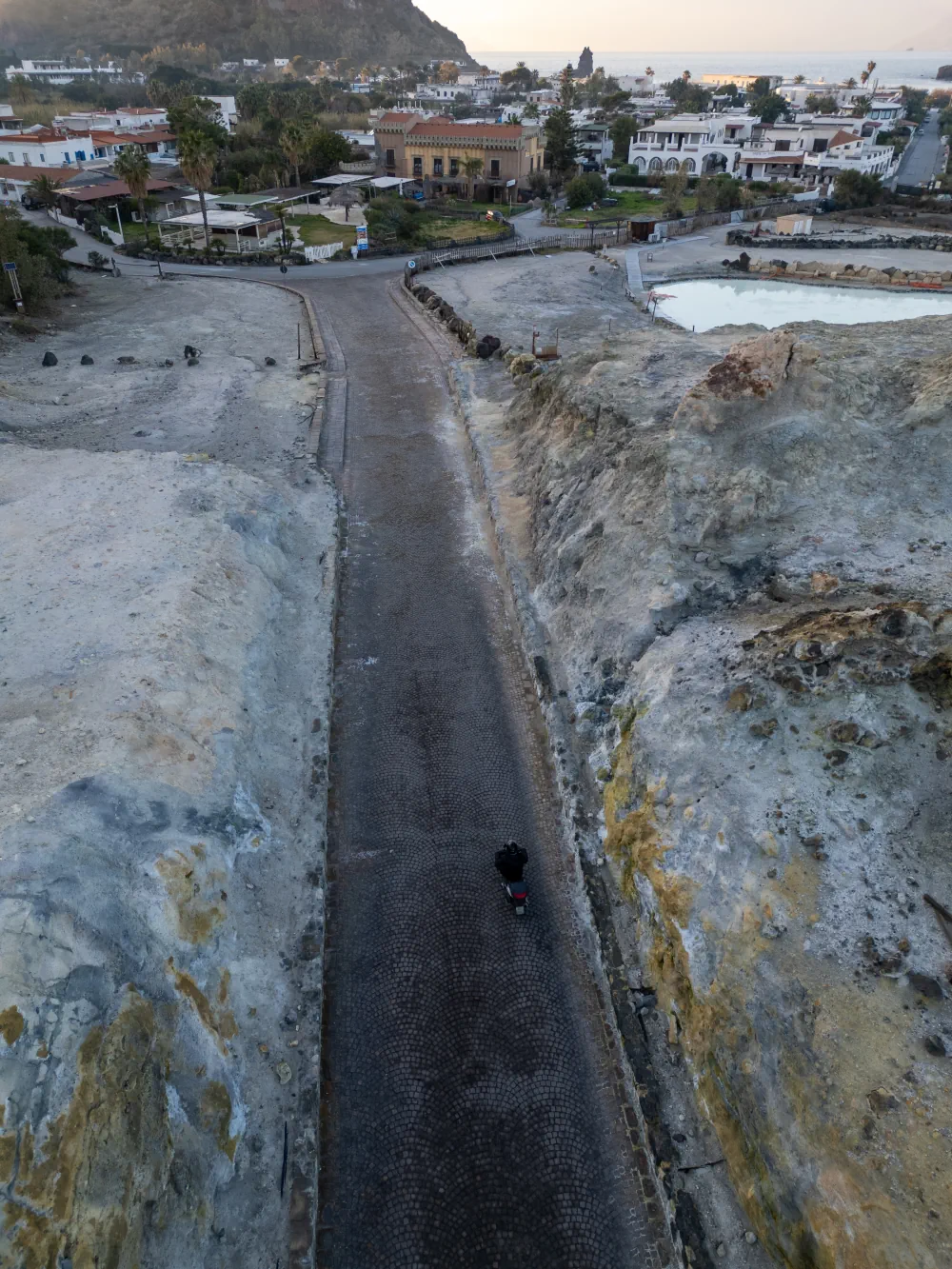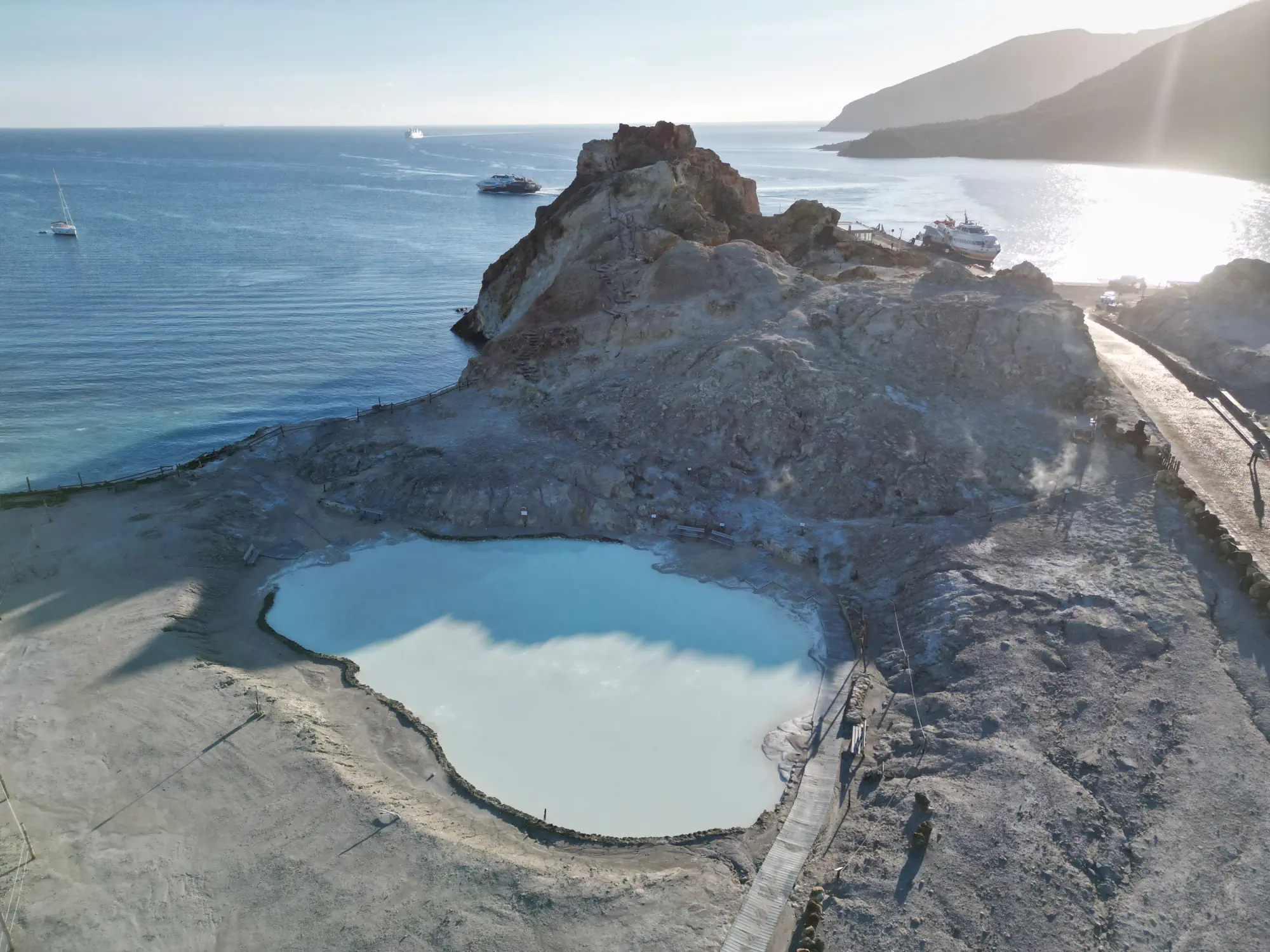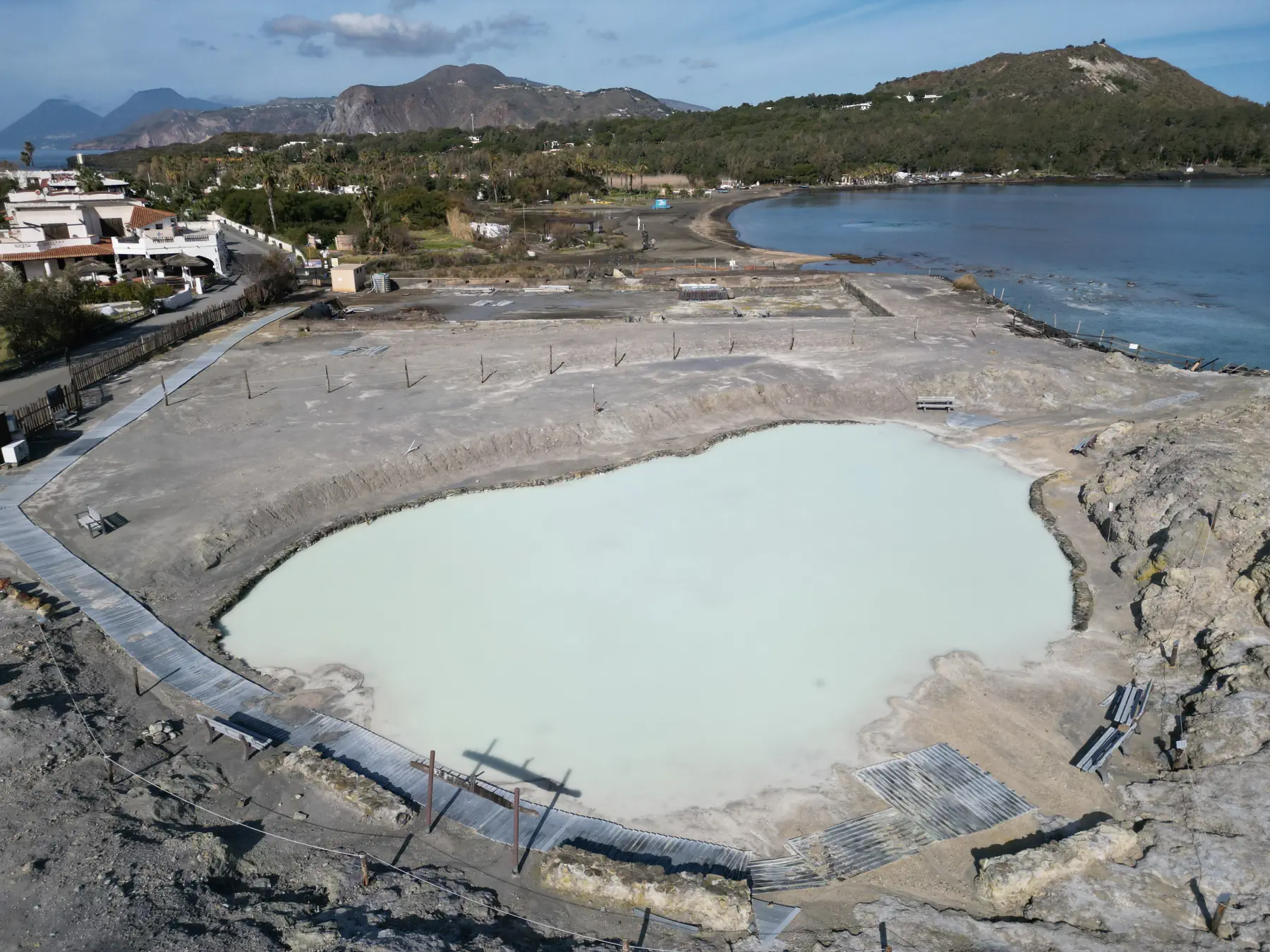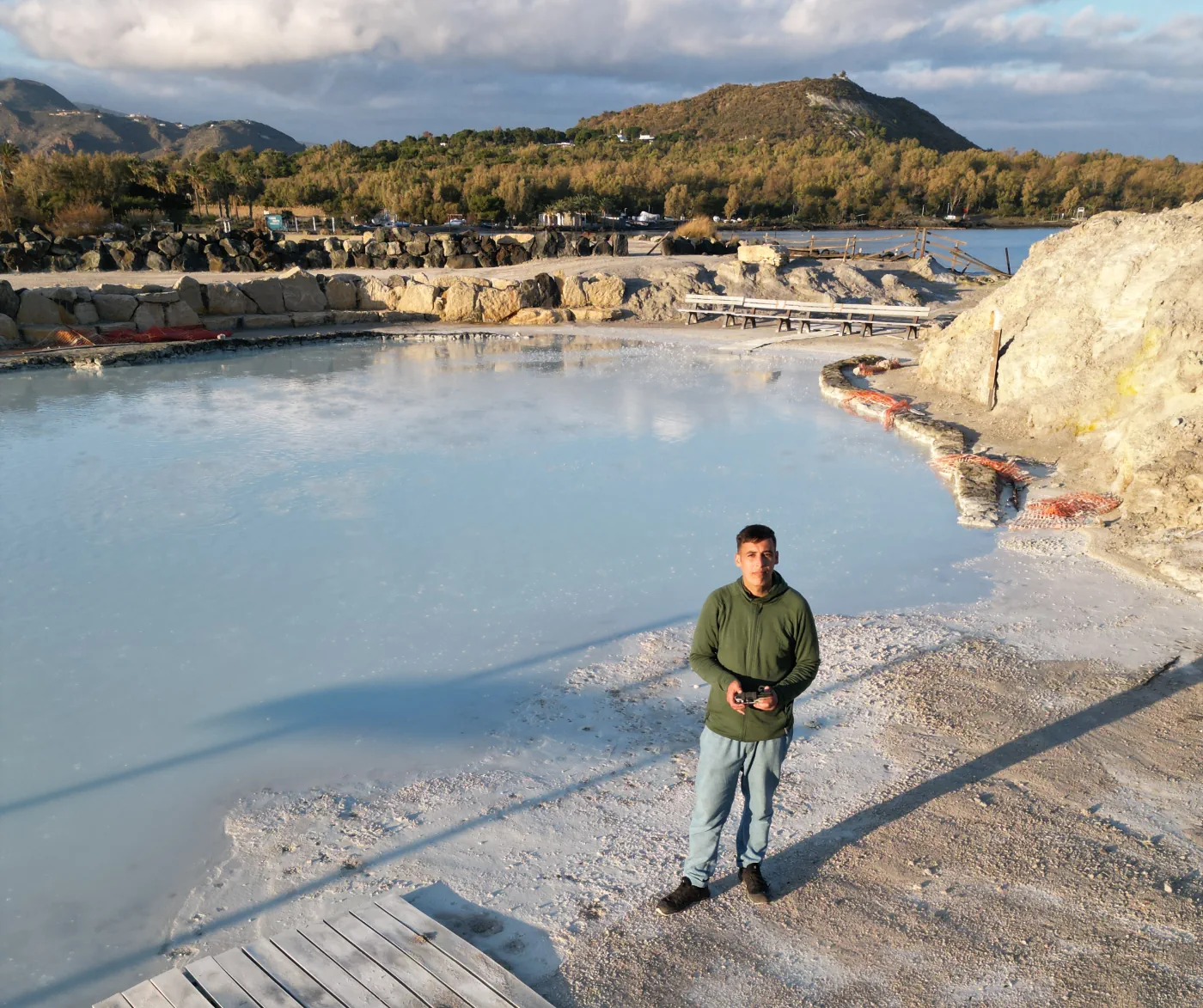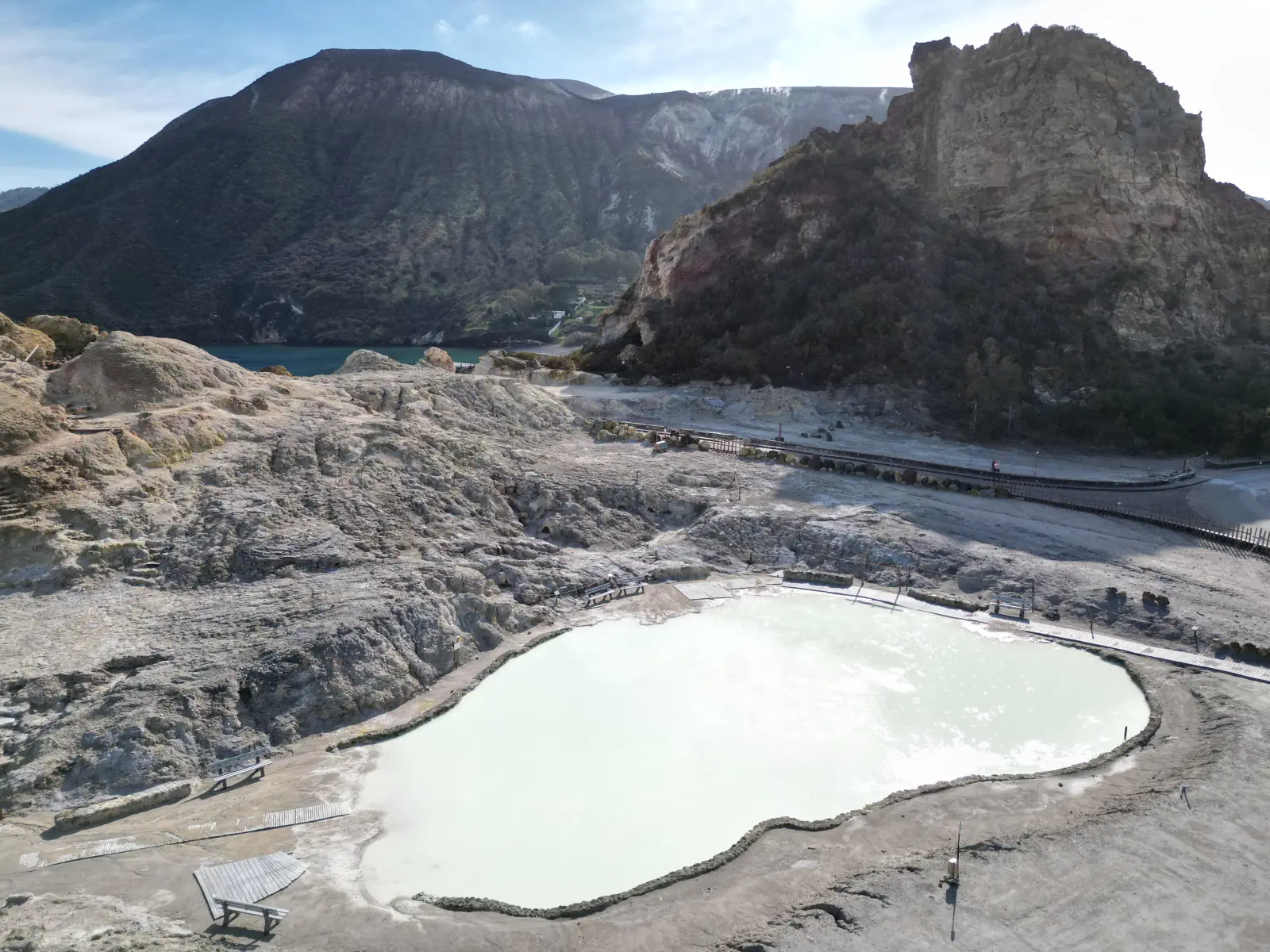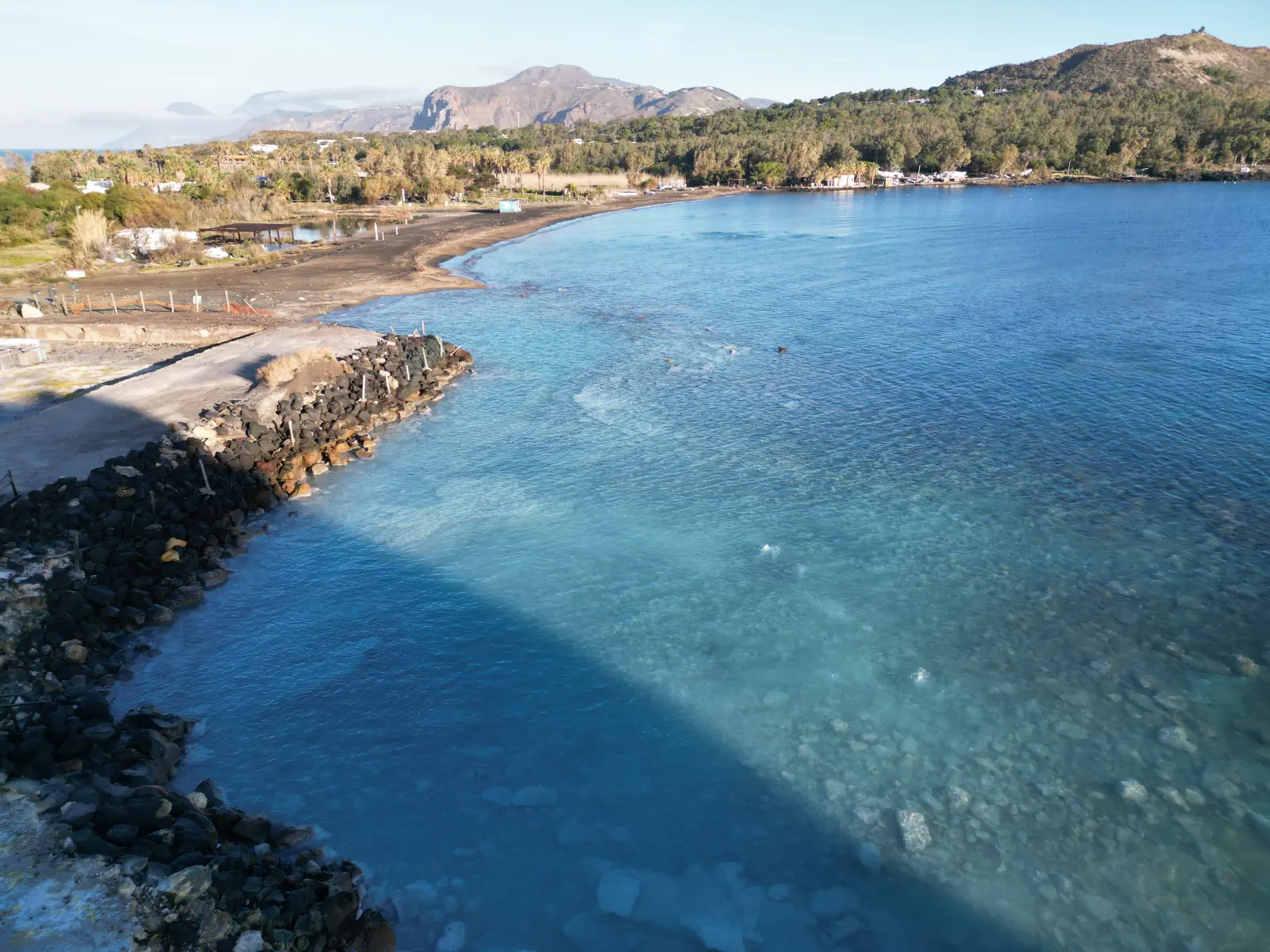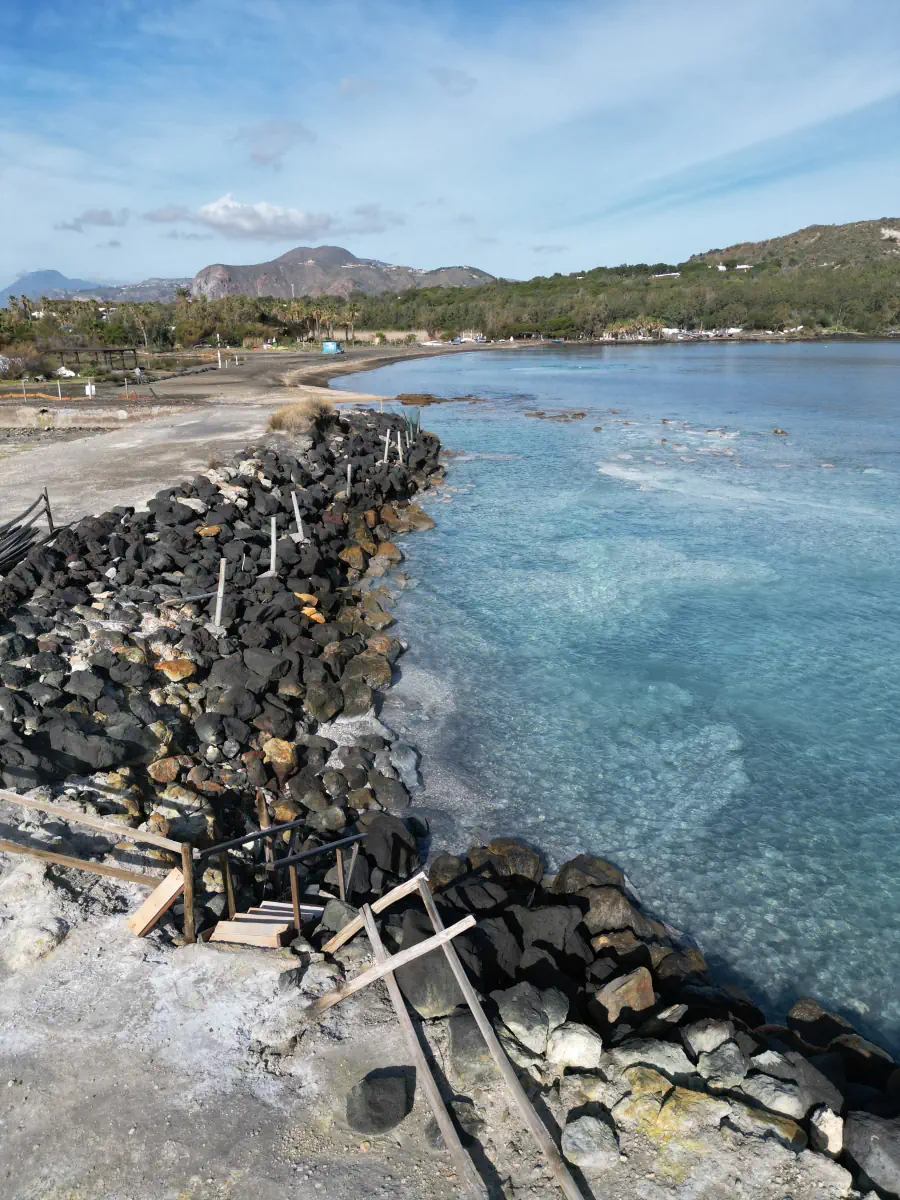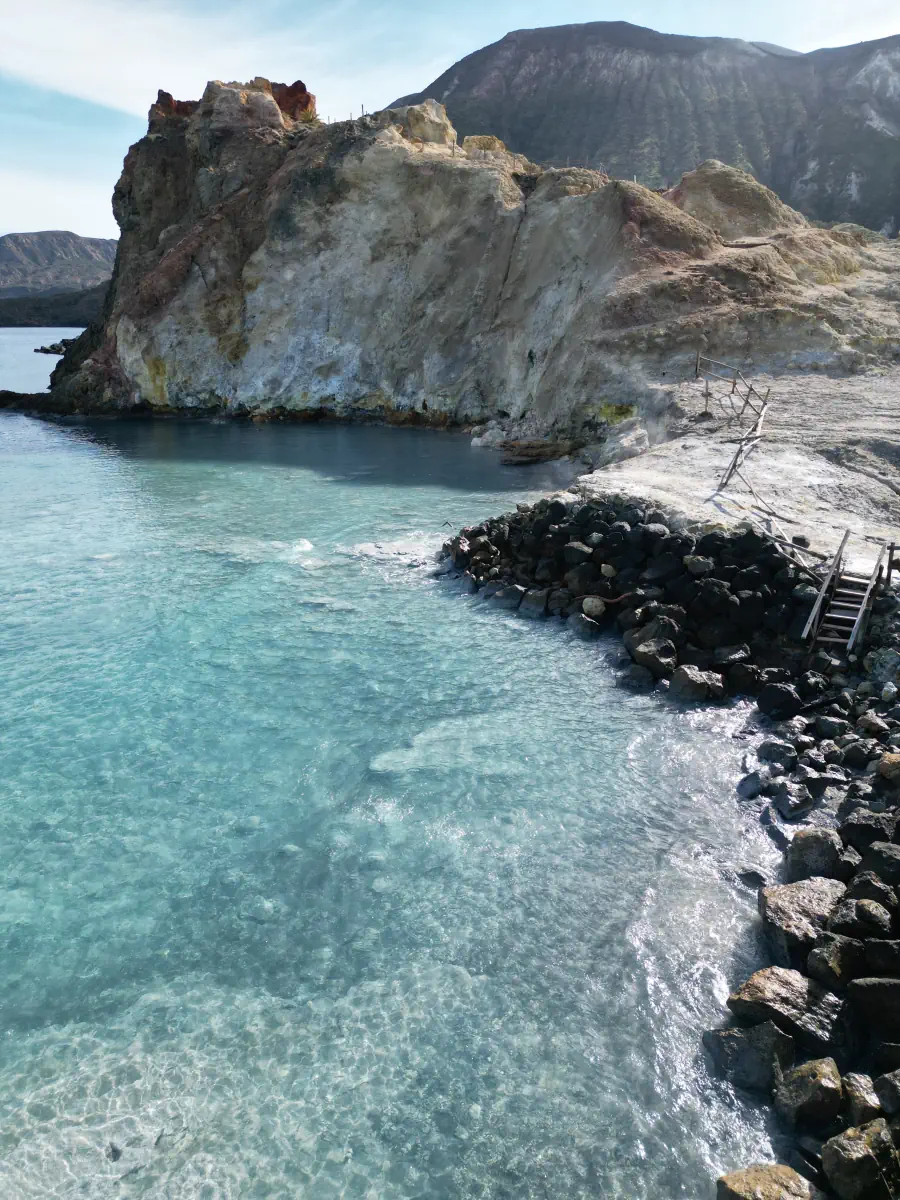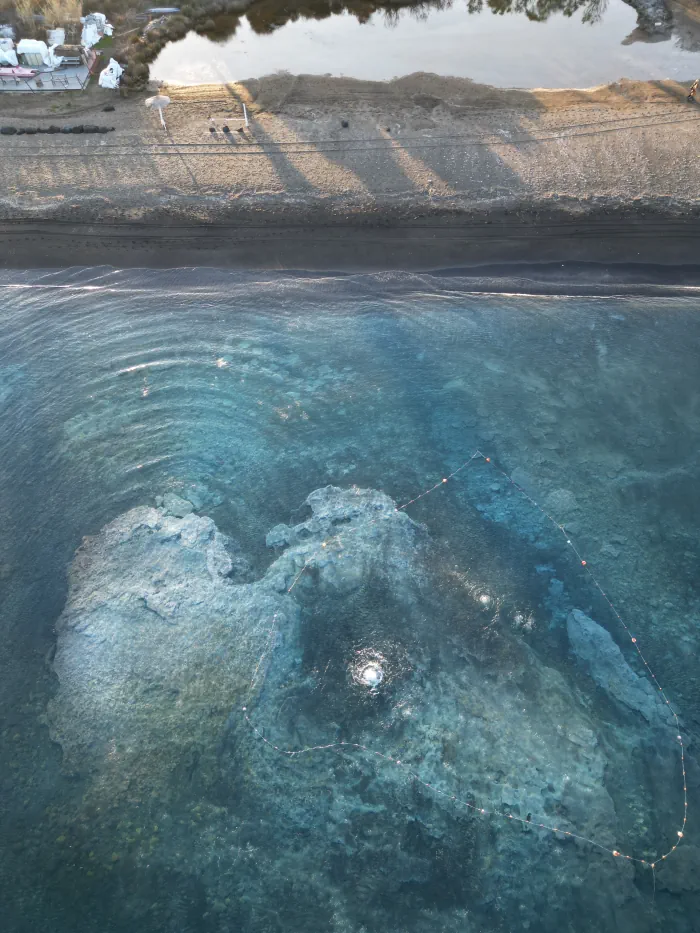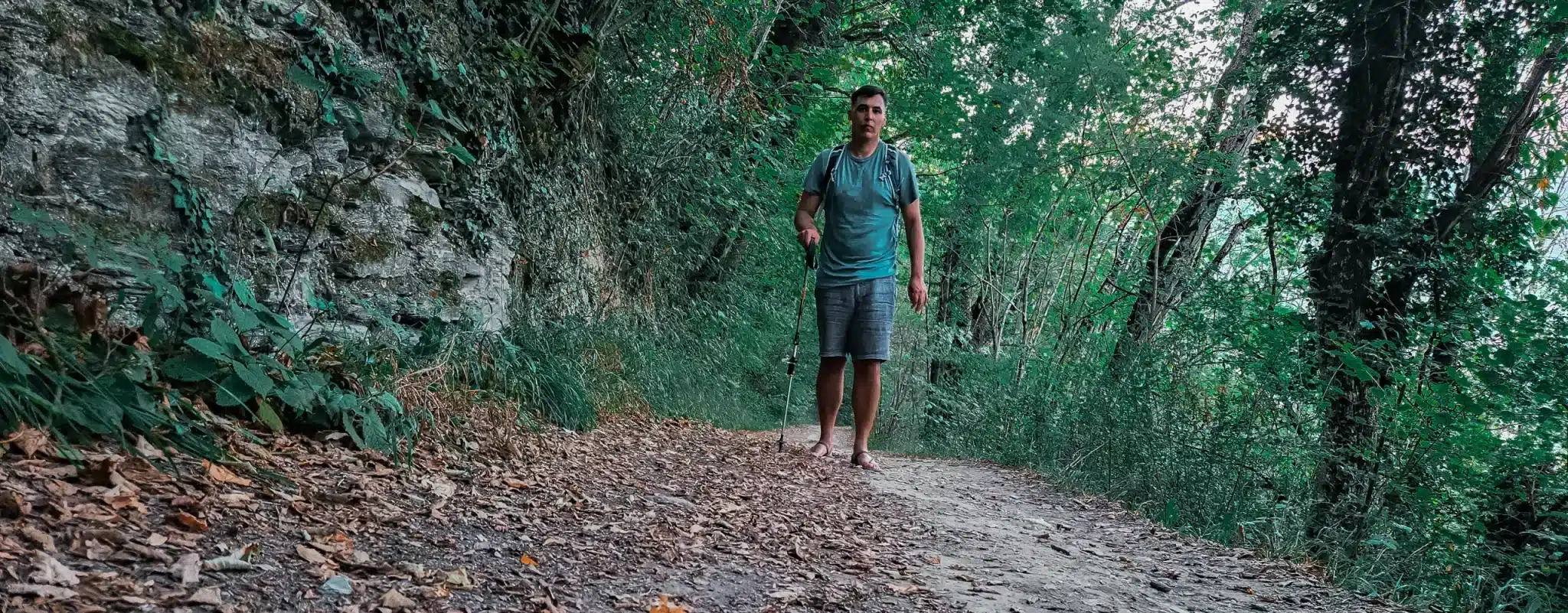Vulcano – Mud Baths, Sulphur Baths
- Nature Source Chaude
- Published on
- Updated on 1 April 2025
The Aeolian Archipelago, located in the Tyrrhenian Sea to the north of Sicily, is made up of 7 islands and is a true paradise for nature lovers, hikers and adventure seekers. However, these lands are also home to more or less active volcanoes that can produce hot springs, geysers and fumaroles.
The island of Vulcano, the gateway to the archipelago, has developed an original character in the field of spa tourism, in particular with its sulphur mud baths, which have immense benefits. The mud baths, the hot waters and the spectacular fumaroles will make your stay even more pleasant.
Vulcano is undoubtedly the place that can reconcile modern man with the demands of everyday life, bringing calm, comfort and an eminently regenerative experience.
IN SUMMARY :
How do I get to Vulcano?
How do I get there ?
To reach Vulcano from Sicily, the first stop is Milazzo. If you arrive by train, Milazzo station is a 45-minute walk from the port and ferry building. There is a regular hourly bus service between the station and the port. You can also book your tickets in advance on the Liberty Lines website. The crossing takes approximately 45 minutes (by hydrofoil).
How do you get around the island?
The island is small enough to do everything on foot. The distances are not too great to get from one end of the island to the other. There is only a small climb to the Great Crater (volcano). It’s one of the only hikes you can do on the island.
A charming island
When I got off the boat at Vulcano, it was as if I was at the end of the world. And with good reason: the hydrofoil (Liberty Lines’ fast boat) drops passengers off in the south of the island, to Porti di Levante (Port of levante), in front of the imposing Gran Cratere della Fossa (Great Crater of volcano). Spectacular fumaroles erupt near the summit, leaving me in awe. I also smell sulphur, a little bitter but bearable. The port exudes an air of cleanliness, comfort and serene beauty that goes straight to my heart.
Turning right (my destination), a pretty cobbled road runs between two hills, with a yellow (sulphur) hue to please the eye. This leads to the island’s main attraction: the mud bath, known in Italian as ‘Laghetto di Fangi‘ (mud lake). This is where the magnificent Baia Levante (Bay of Levante) opens up.
Vulcano, mud baths
After crossing the cobbled road, I arrive near the site of the Vulcano Mud Baths. The site is surrounded by a barrier of rocks and a wooden fence preventing access. There is a small pavilion to welcome visitors.
ℹ️ Information and rates :
The Vulcano Thermal Baths are managed and maintained by the company Geoterme Vulcano S.R.L. (site officiel).
Discovering the muddy pond
This pool of muddy water is close to the Hot Waters Beach. The two form a whole and represent the thermal baths of Vulcano, where bathers and curists can meet at any time of the day. The Italians call this place ‘Terme di Vulcano‘.
For some years now, these thermal baths have been in the hands of the company Geoterme Vulcano, which manages them. But since March 2020, the mud baths have been closed. It is probably being managed with an eagerness to develop it as much as possible.
A establishment was to be built to provide greater comfort for bathers.
5 years later, the earthworks have been carried out, but there is still no facility. For reasons unknown to me, the island of Vulcano, a UNESCO World Heritage Site, has been deprived of its main attraction all this time: the mud baths. However, shopkeepers have told me that the mud bath may reopen during the summer season (in 2025).
So the place is deserted. Normally you have to pay 3 euros (including a 1 euro shower for an adult) to enter the mud bath. But everything is closed at the moment.
When I come across the mud pool, I notice that it gives off a really intense and persistent rotten egg smell. I’ve never experienced this rotten egg smell with such superiority over other sulphurous springs.
But fortunately, the sea remains at a safe distance from the muddy pool. So there’s no need to fear its swirls and swift currents when it’s agitated.
Thermal water (vapours and gases) is sourced from natural springs located in a sedimentary zone.
The thermal area is therefore fortified with rock barriers. A wooden path also provides a useful precaution. The area around the pool is remarkably soft, smooth and free of pebbles or large stones, which is much appreciated. Two almost insensitive slopes allow clumsy bathers to venture into the mud pool unhindered.
The temperature of this water mixed with mud is lukewarm. But the temperature is hot, sometimes scorching, where vapours and gases are escaping from the ground.
These gases rise to the surface in the form of large bubbles, before bursting. Observing such a thing is both fascinating and soothing. It gives you the same effect as watching the waves in the sea. On the other hand, the water is very murky and the mud bath seems inhospitable. Who would like to dive into a murky broth?
A precious thermal mud
The water is full of whitish mud. I cannot see through it, which is not reassuring.
In fact, this milky water is opalescent and does not absorb any wavelength of the light. It neither absorbs light nor lets it through, just like milk. These waters are therefore loaded with tiny solid particles, called colloids, which deflect the light. What’s more, these negatively charged colloids keep themselves in the water by repelling each other.
Due to their tiny size (less than 0.002 millimetres), these colloids are actually clays, often accompanied by soil bacteria and living organisms, all of which are negatively charged. This bacterial population is adapted to the conditions of the environment and is specific to the spring’s point of emergence. This muddy, milky water is rich in metabolites, the products of a long maturing process. It’s a real rejuvenating bath where colloidal (living) clay, mineral salts, gases and micro-organisms coexist in the same liquid.
Thermal mud, on the other hand, which bathers apply to their bodies, is held at the bottom of the water by its own weight. It is neither negatively charged nor a colloid. In fact, you’d be better off not using it, so you don’t disturb this living medium. I explain you why just after.
Soaking in the bath already brings you into close contact with this beneficial mud.
In this way, you can take full advantage of the properties of these colloids suspended in water.
These muddy waters contain organic molecules that can penetrate the skin barrier, but only when they are damp.
On the other hand, if I cover myself in mud and leave it to dry, there is no more exchange with the skin. The more water that evaporates, the harder the mud becomes and the more its cracked deposits dry out and irritate the skin. Also, the clay paste that is often left to dry on the face is actually harmful to the skin.
What’s more, this living mud, rich in micro-organisms , is perfectly adapted to the conditions of this medium (water temperature, pH, no light, minerals, gas…). If you take it out of the water, the conditions are suddenly very different (light, oxygen, evaporation, etc.).
So it’s best to do nothing and let the bath do the rest: the colloidal clay (negatively charged) is attracted like a magnet to the skin (positively charged).
Finally, this clay, whether colloidal or not, does much more than passively deposit its substances that the body needs. Knowing its composition is not enough to explain its action.
Note that this pool of muddy water is slightly radioactive (like many hot springs) and highly sulphured. It is therefore very stimulating for the skin but can irritate certain sensitive skins.
It may therefore be a good idea to start gradually or to limit the time you spend in the muddy water (at least the first time). A sign placed around the bath gives certain health recommendations.
Bathing advice :
Sulphur can be stubbornly impregnated into clothing. Some textiles (towel, swimming costume, underwear) may end up in the bin. It may also be useful to wear water sandals to avoid burning your feet.
Vulcano, a sulphur mud bath with many health benefits
The presence of volcanic mud pools is always a sign of gas reserves hidden underground. What’s more, the strong rotten egg smell emanating from the area explains the presence of large quantities of sulphur in the form of hydrogen sulphide (H₂S).
To highlight the sulphurous nature of the mud bath, all you have to do is observe the effect of the water on certain reagents. In particular, its ability to blacken silver jewellery or bracelets should prompt their removal. The same applies to lead objects, which will also precipitate and turn brown. Even gases in the air will tarnish these reagents.
As the pool is uncovered, the gases can escape freely, without fear of denaturing the milky water. The influence that contact with air has on the dynamics of sulphurous water is enormous.
So, according to a meta-analysis[1], concentrations of 30 to 50 ppm of hydrogen sulphide have been found in the air near the mud pool. There is no other hot spring in Italy or France with such a high concentration of H₂S. Moreover, this gas has proven curative properties in respiratory tract diseases (widely used in spas), rheumatism and skin diseases. But how about this unusual concentration?
The mud bath also releases a large quantity of carbon dioxide (like many hot springs) into the air.
This CO₂, although beneficial when dissolved in water, can be toxic in the air when it reaches high concentrations.
Small peaks below 1000 ppm have been recorded around the mud bath, which is far from alarming. A normal level of C0₂ in the atmosphere is 430 ppm. If you want to know more about this subject, I’d like to invite you to read the beginning of this article : How to Cleanse your Lungs with Simple, Natural Ways ? Our daily intoxication with our own CO₂ (linked to our lifestyle) is much higher and can even rise to 5000 ppm at night (i.e. for about ten hours).
According to the meta-analysis, other gases are associated with hydrogen sulphide. Hundreds of ppm of methane (CH4) and hydrogen (H2) have been found.
All of these gases (hydrogen sulphide, methane and hydrogen) have powerful healing properties. To find out more, I talk about them at the end of this article: How to Cleanse your Lungs with Simple, Natural Ways ?
Finally, these muds, typical of volcanic muds, are certainly composed of a very large quantity of silica. Silica is essential for cartilage, joints, bones, skin, etc. By the way, this mud bath often produces impressive results from the very first bath. This bath is also extremely rich in micro-organisms, a source of organic molecules,enzymes, vitamins, anti-inflammatory molecules… Without this diversity of micro-organisms, the properties of the mud bath would not be the same. For more information, have a look at this article : The Soil, the Base Layer and Living Environment of a Hot Spring.
The "Spaggia delle Acque calde" (Hot Waters Beach)
A stone’s throw from the mud baths, there is an interesting beach (also known as the Fumaroles beach) where you can swim in a sea heated by gas columns.
But don’t be fooled by the apparent monotony of the sea. Gases are escaping vigorously from the seabed in various places. The bubbles can reach frightening sizes in certain places.
In this month of February, the water is still cold and the sharp variations in sea temperature don’t encourage me to go for a dip. A wooden ladder leads to the first area of hot water, about 20 metres from the mud bath. The gases emanating from here are similar to those from the mud bath, but seem to react differently with the seawater, producing incredible white precipitates. This time, the strong mineralisation of the sea causes the sulphur to flocculate.
A few dozen metres away, a long strip of very fine black sand marks the entrance to the sea. A second zone of warm water is open to bathers.
Reference
Diliberto, I. S., Cangemi, M., Gagliano, A. L., Inguaggiato, S., Jacome Paz, M. P., Madonia, P., Mazot, A., Pedone, M. and Pisciotta, A. (2021) Volcanic Gas Hazard Assessment in the Baia di Levante Area (Vulcano Island, Italy) Inferred by Geochemical Investigation of Passive Fluid Degassing




